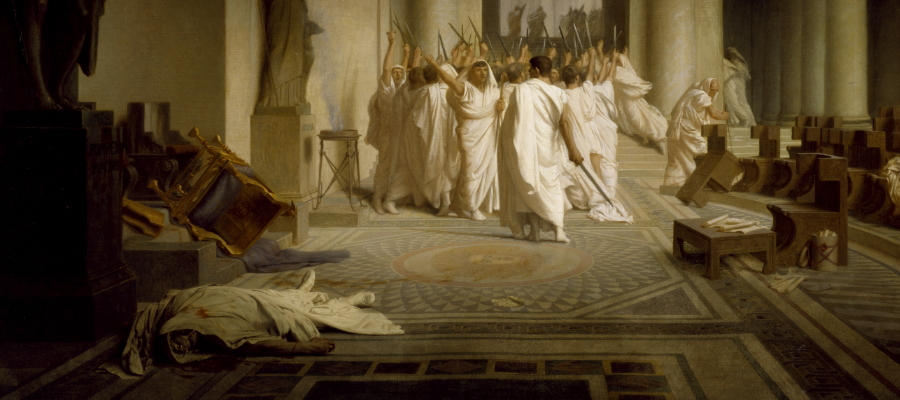 A production of Julius Caesar in New York City recently came under fire for having Caesar looking like our current President, even though other productions in years past with other Presidents with no such complaints. Given that the plot of this 400+ year old play revolves around the assassination of a head of state, it is hardly surprising when modern touches are applied.
A production of Julius Caesar in New York City recently came under fire for having Caesar looking like our current President, even though other productions in years past with other Presidents with no such complaints. Given that the plot of this 400+ year old play revolves around the assassination of a head of state, it is hardly surprising when modern touches are applied.
However, it is also hardly necessary to do so, as the current Scena Theatre production at the Atlas Theater shows. While the time is supposed to be current, there were certain aspects that – to me – seemed to speak of an assassination 150 years in the past. In particular, the character of Brutus appeared to be styled after a certain assassin from that era: Tall, slim stature; curly, dark hair; mustache. Brutus looked like the most famous murderer in US history, John Wilkes Booth.
Booth (pic) was, like Brutus and his conspirators, convinced that his actions would change the opinions of the masses, and thus change the course of history. The main difference, historically, is that Booth’s actions inspired only revulsion, while Shakespeare depicts the Roman citizens as more ambivalent and open to the words and actions of their leaders. In particular, Shakespeare uses the oratory of Mark Antony to convince the crowds of the error in Brutus’s way.
This scene was also the strongest in the production, allowing Antony to change the opinion of the mob with a few well-chosen words. Whether Antony was right in his argument or not becomes almost irrelevant, as both crowd and audience are swept up in the oration and turn against Brutus and his companions. The rest of the play becomes a mopping-up action, with the conspirators realizing that they have not, in fact, protected Rome from a tyrant, but were in danger of becoming this very tyrant themselves.

Detail of the picture La Mort de César by Jean-Léon Gérôme (Wikimedia)
The strength of Scena Theater’s production lay in the way it kept the language of Shakespeare in the forefront. The straightforward set design – a box on which most of the action took place, with the support of a few chairs, tables, and a small step ladder – allowed the actors to keep the original words as their guiding lights. The design was backstopped by three large monitors which showed text fragments, pictures, and videos relevant to the plot. The videos included words actually being spoken, German text translations, Roman vistas, or similar sights from Washington, D.C. Their purpose was less to give a backdrop, and more to show the universal nature of the plot unspooling in front of it.
A run-time of under two hours also helps keep the plot moving swiftly enough that the nuances are not lost, while still keeping the arc fully in mind. There were times when it would have been preferable to slow down the words a hair and allow the language to fully be expressed. This may well have been a decision made to keep the action moving, to keep the plot in the forefront.
If you have ever wanted to see one of Shakespeare’s great plays, and want to see it in an intense and compressed manner, here is your chance. It plays at the Atlas Performing Arts Center from now until September 24, Thursday to Saturday at 8:00 PM, Sundays at 3:00. There are also Saturday matinees on September 16 and 23.
WHAT: Julius Caesar at Scena Theater
WHEN: Through September 24
WHERE: Scena Theater is inside Atlas Performing Arts Center, 1333 H Street NE
WHY: Because art and politics and Shakespeare and DC, obviously
